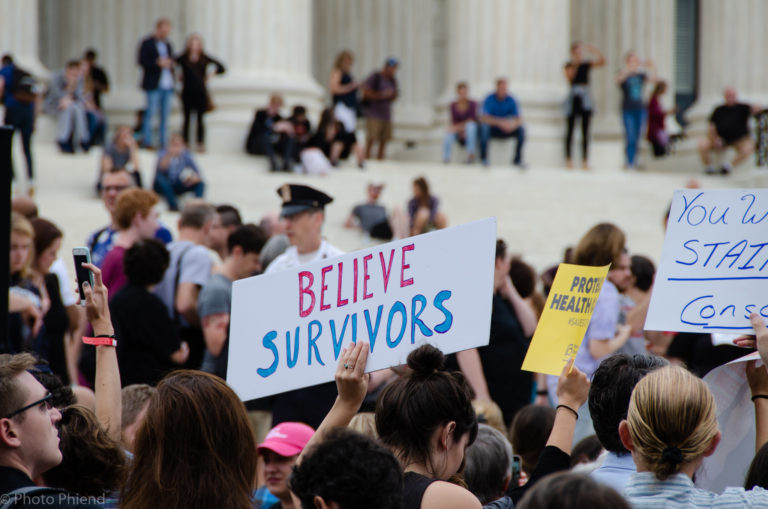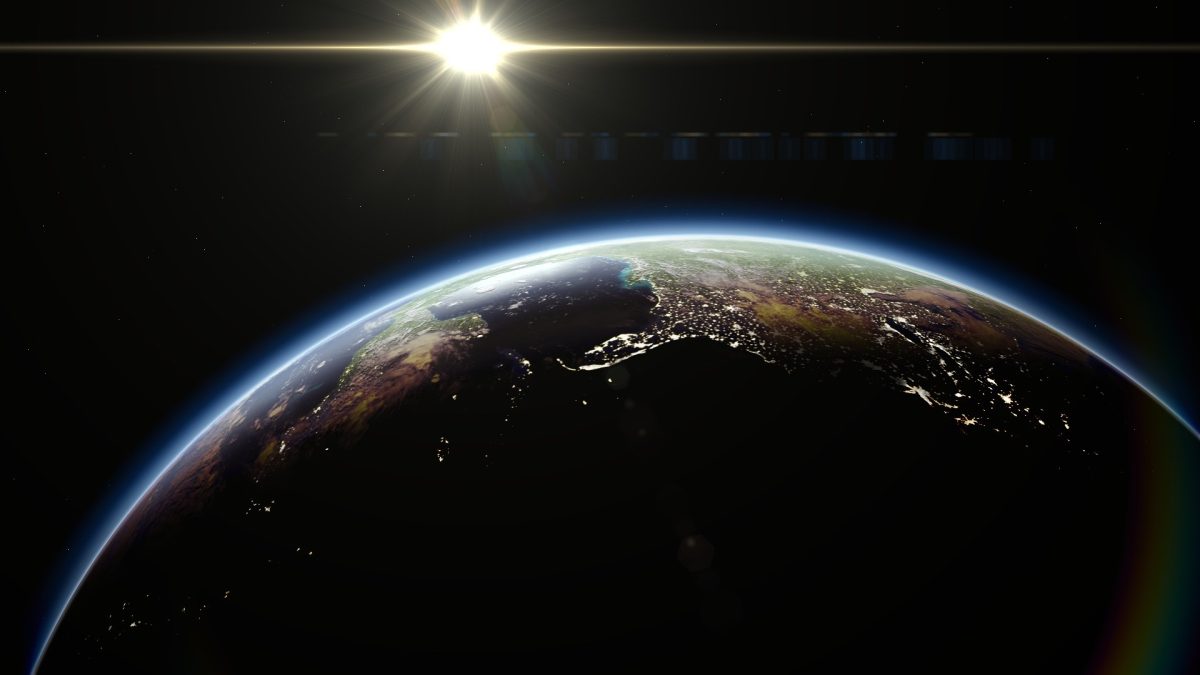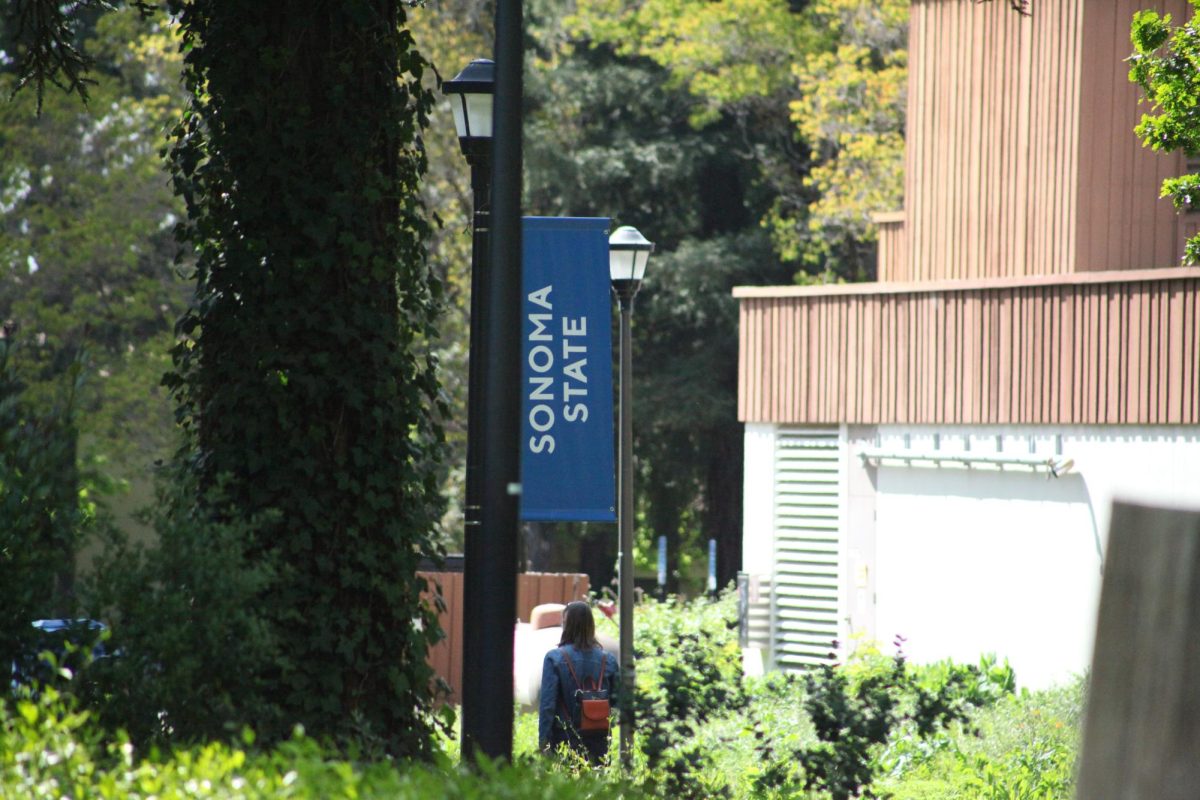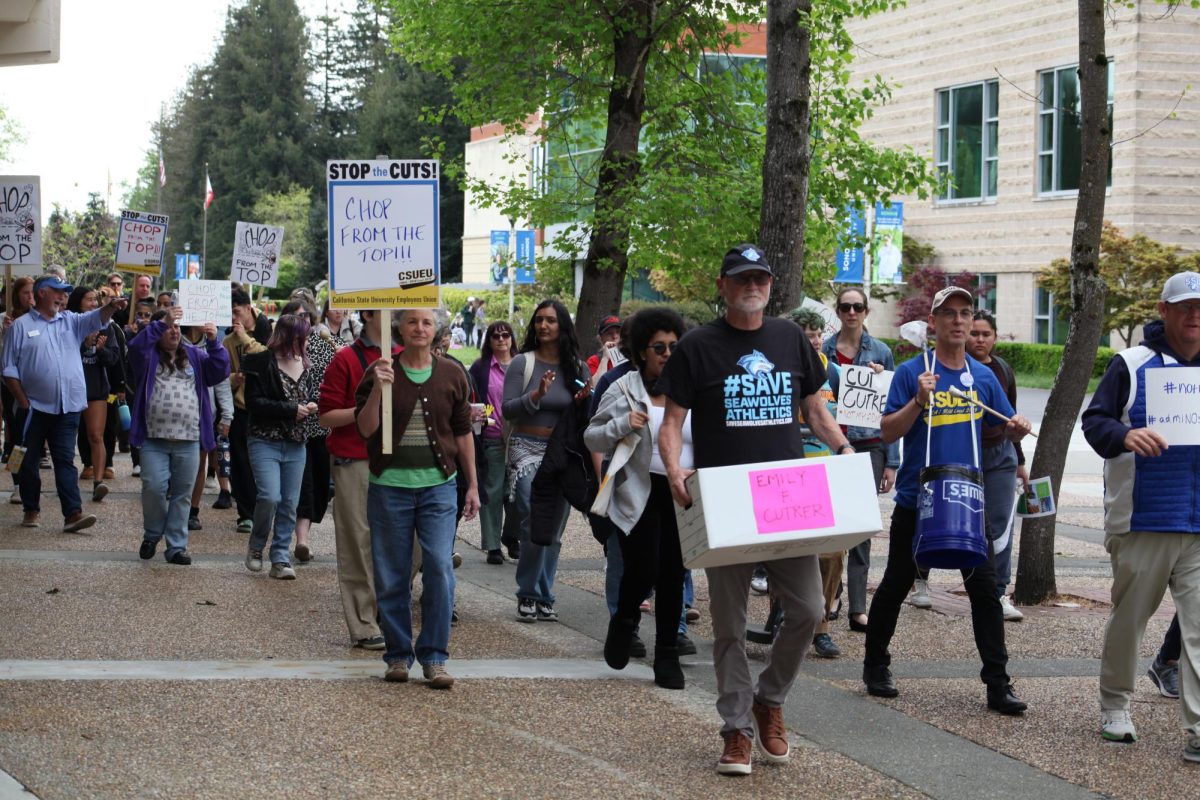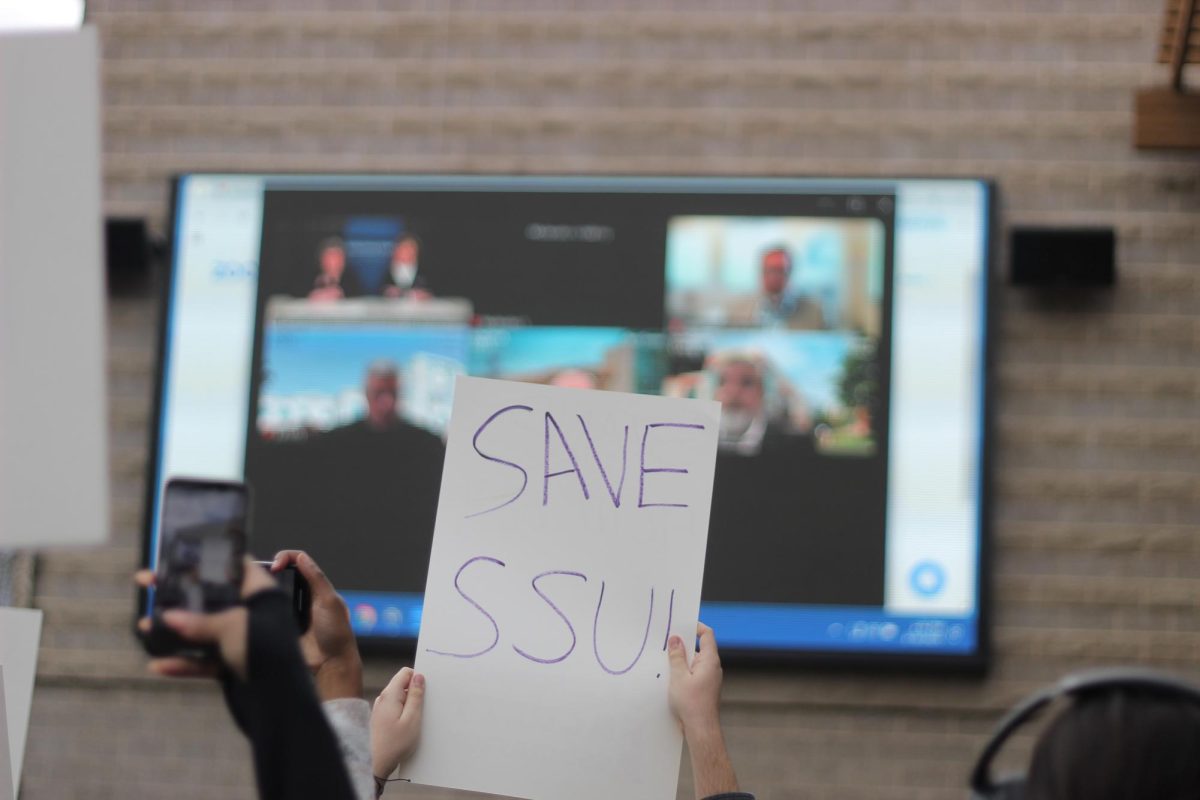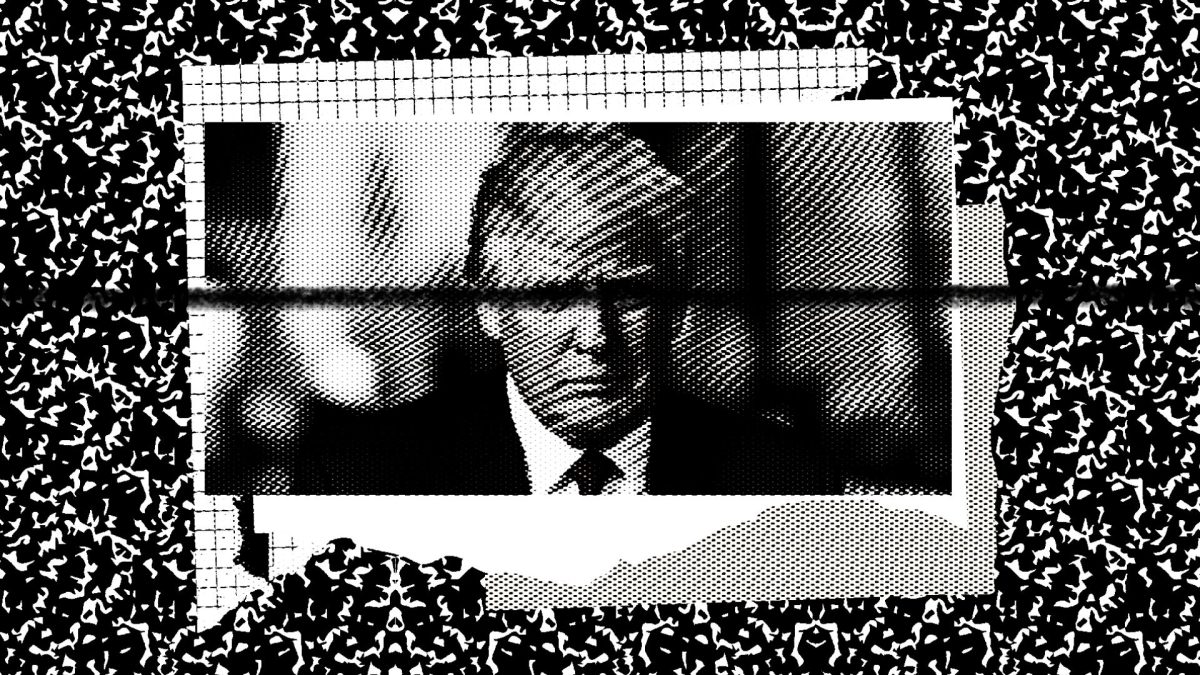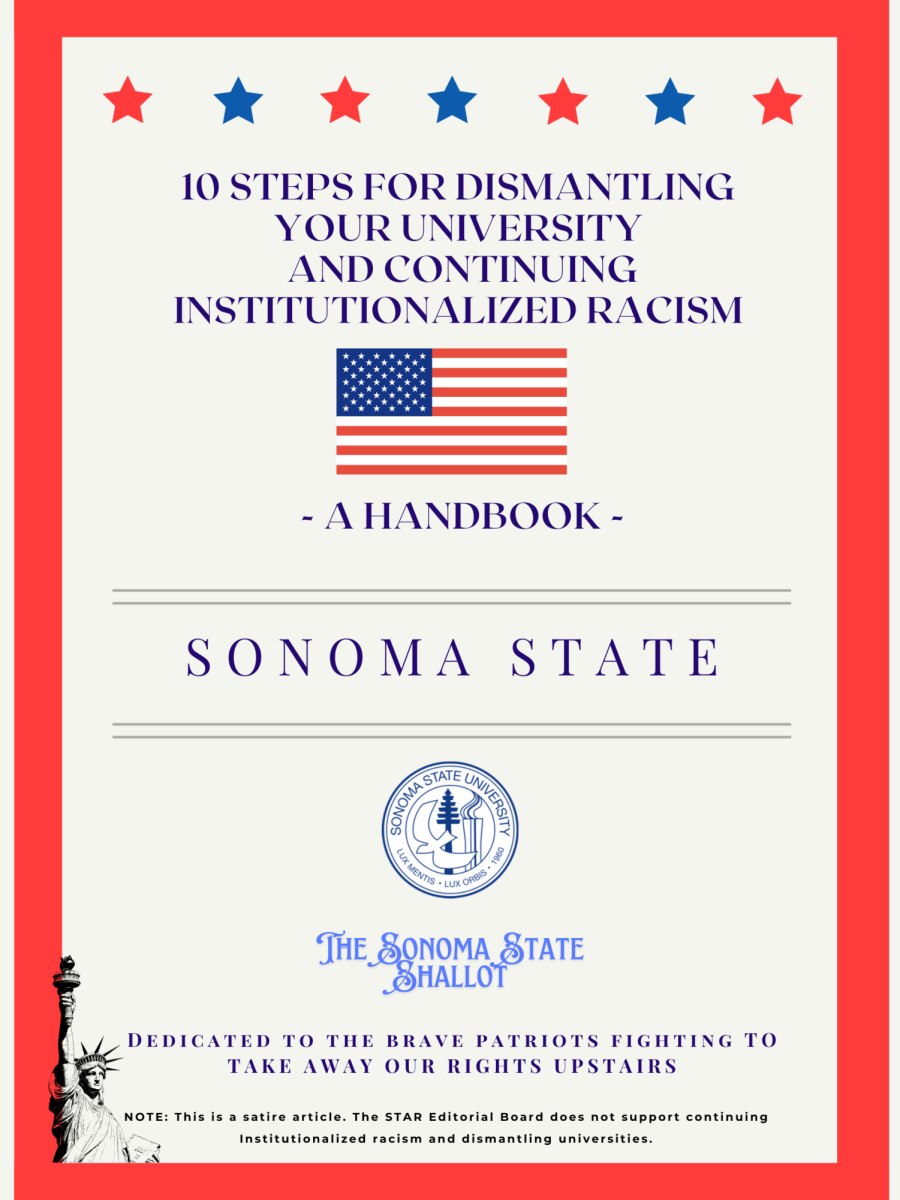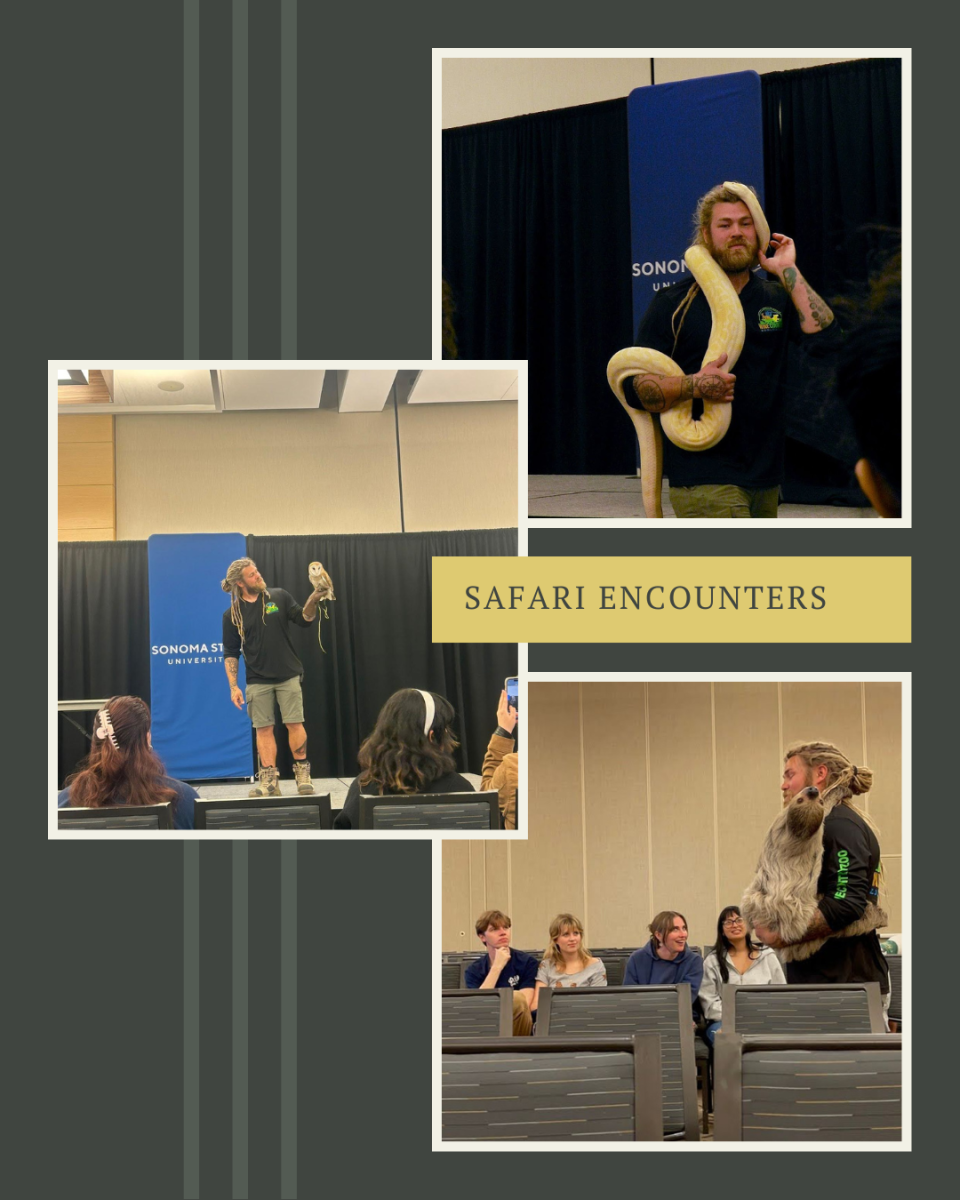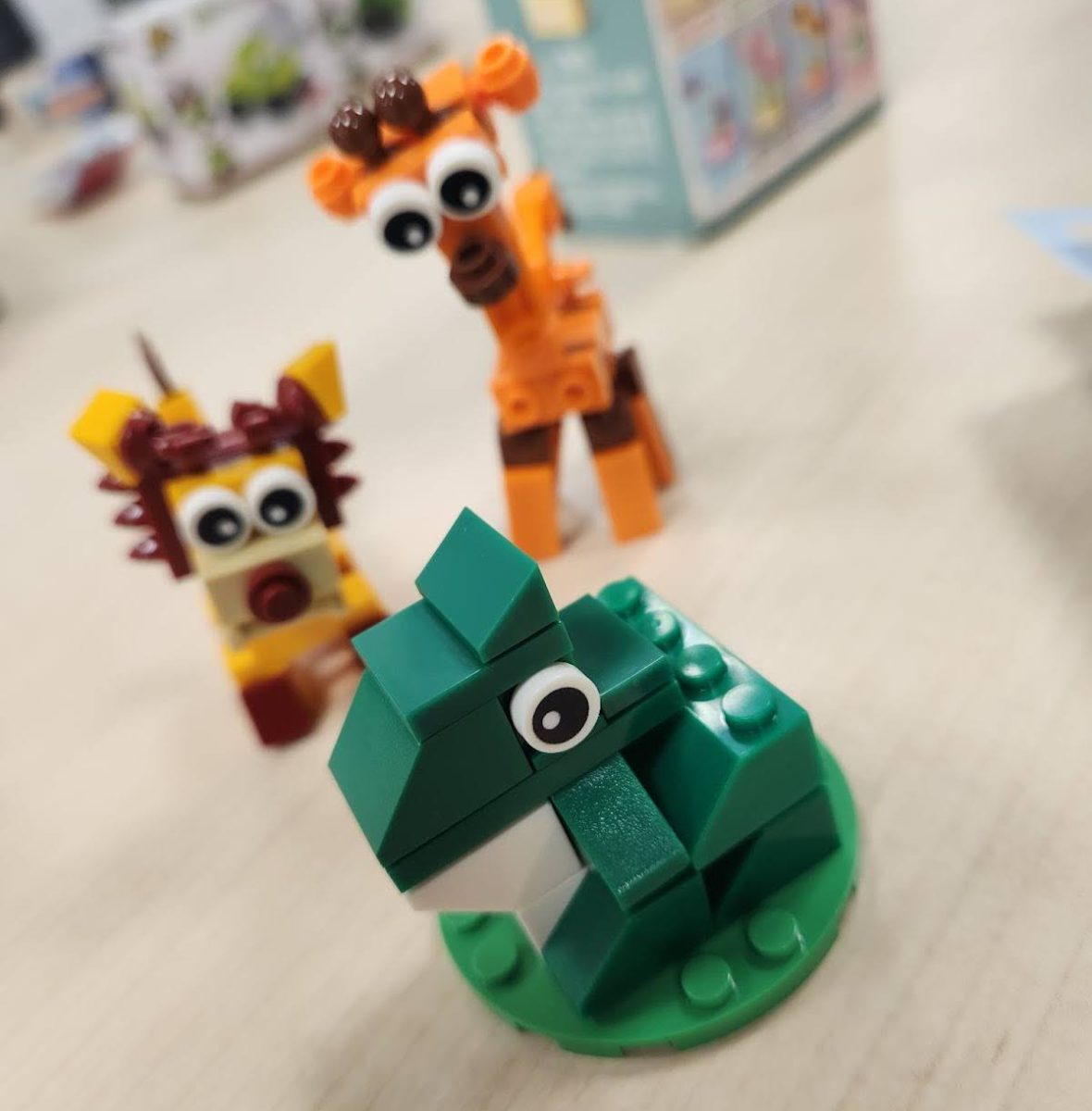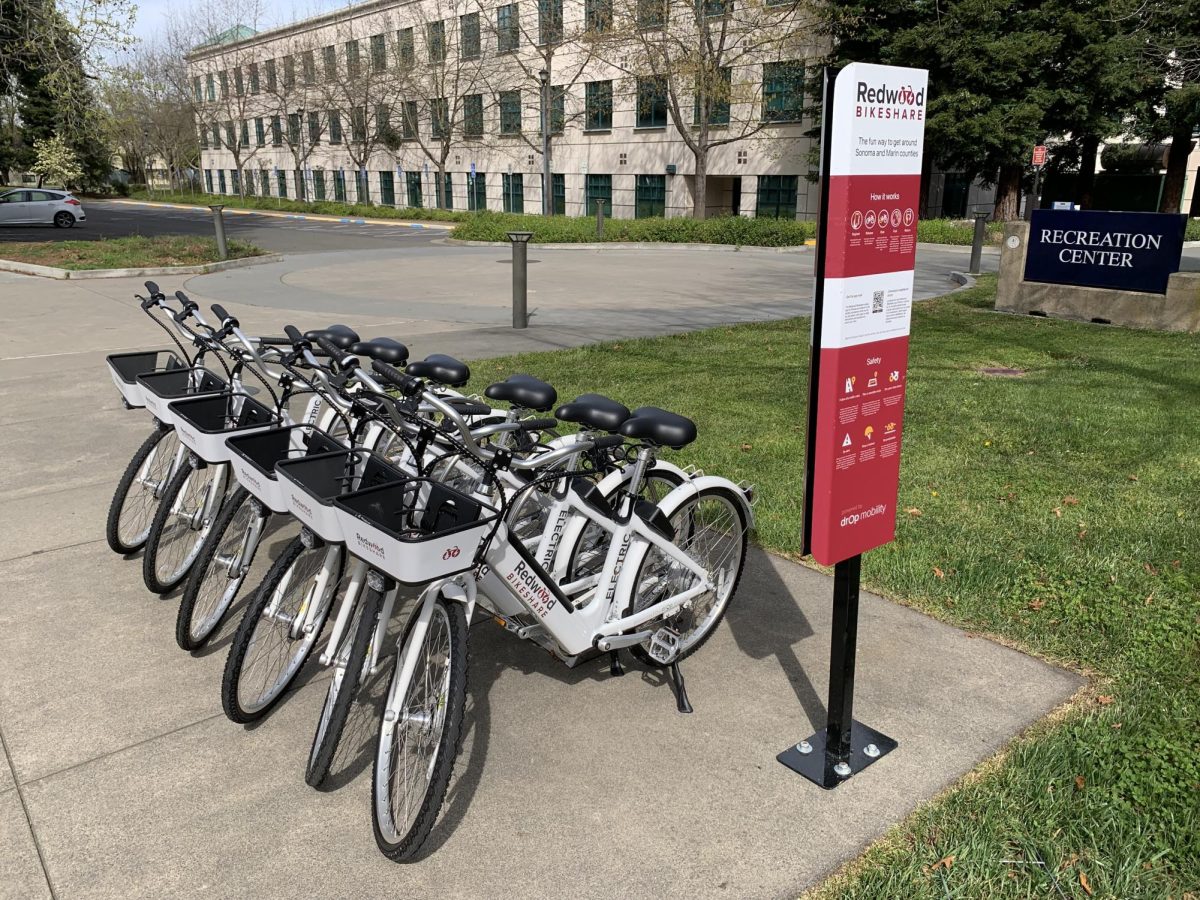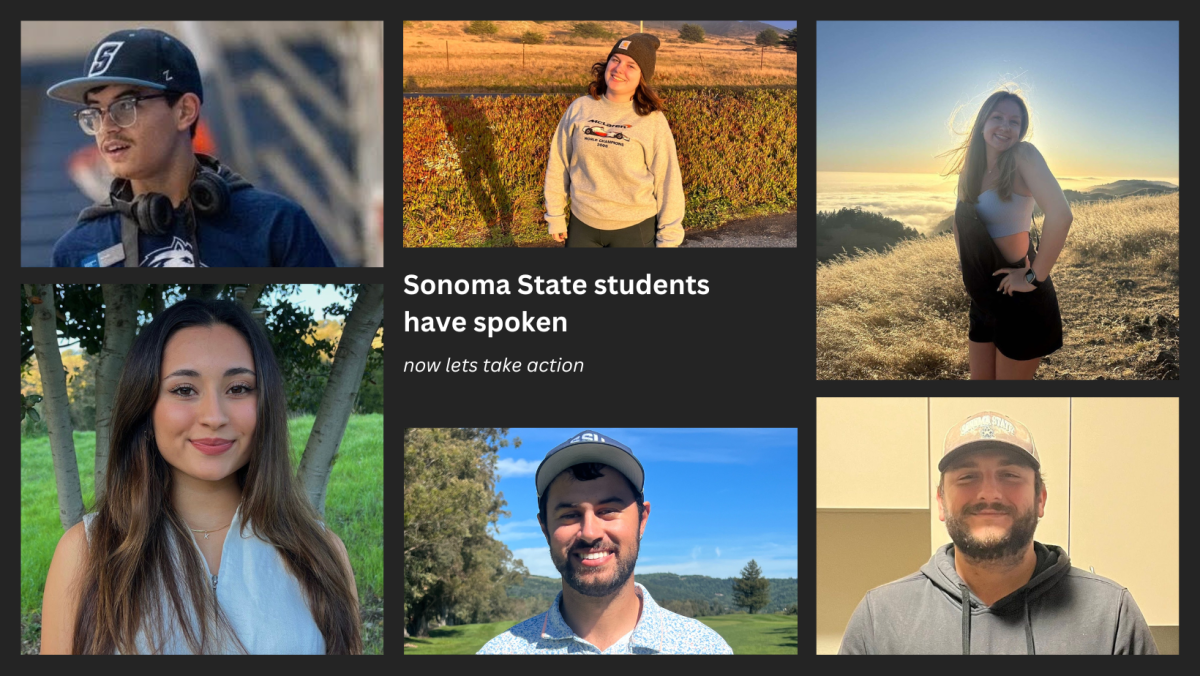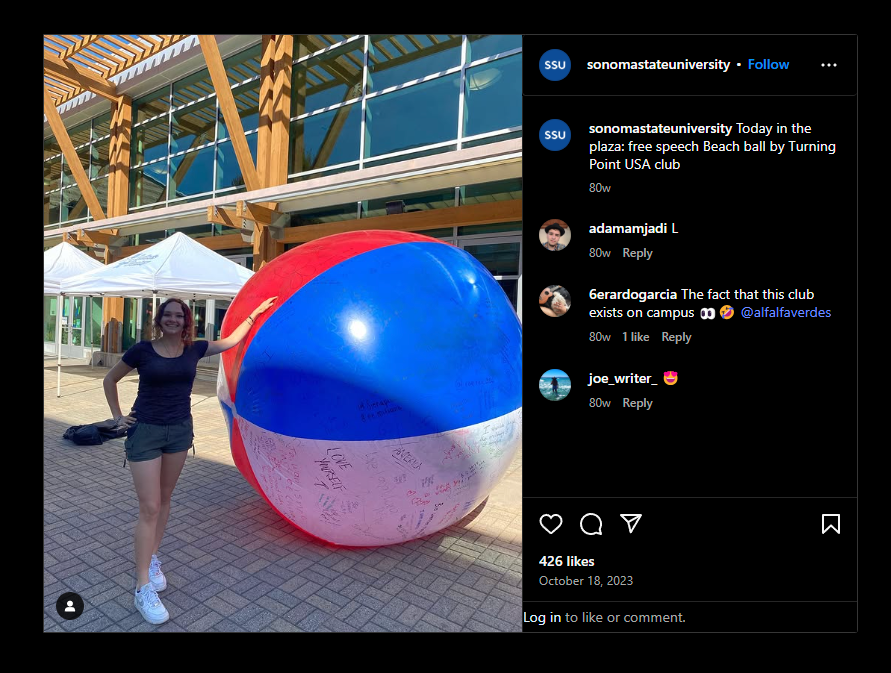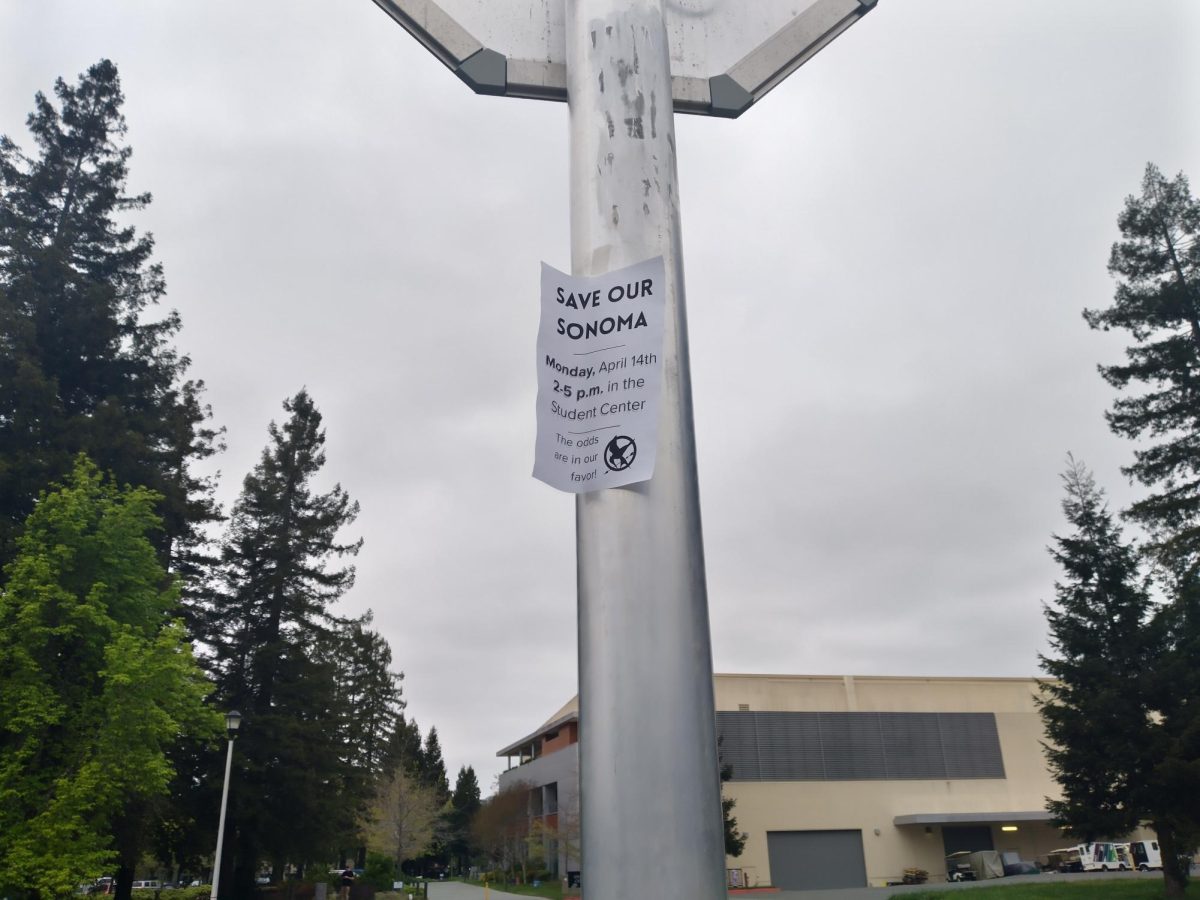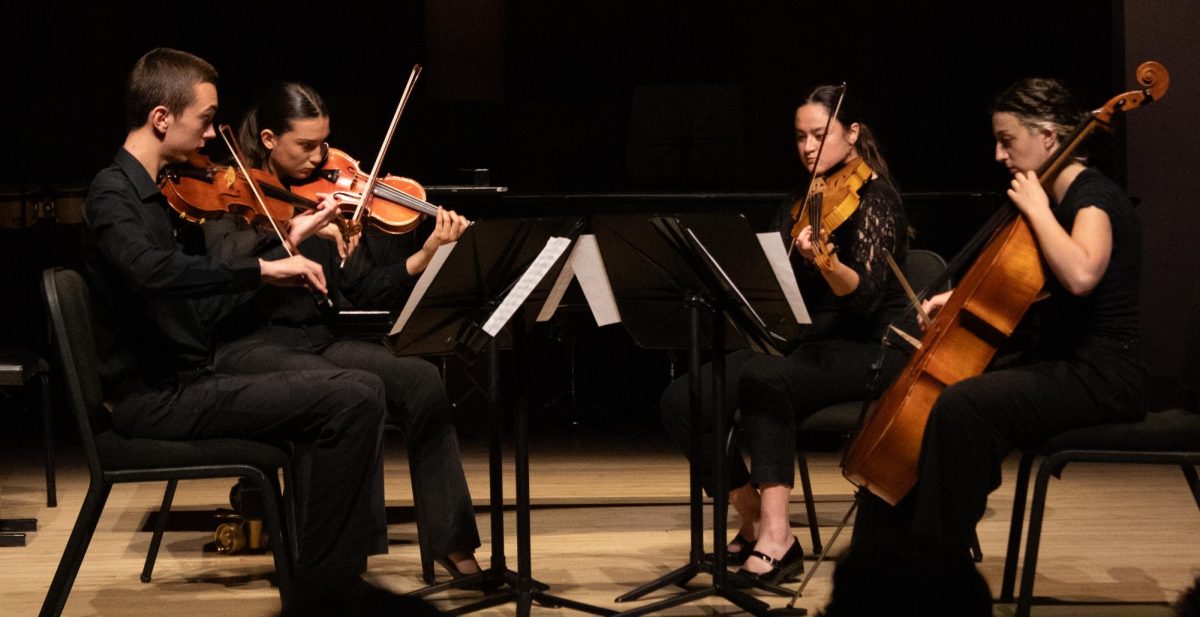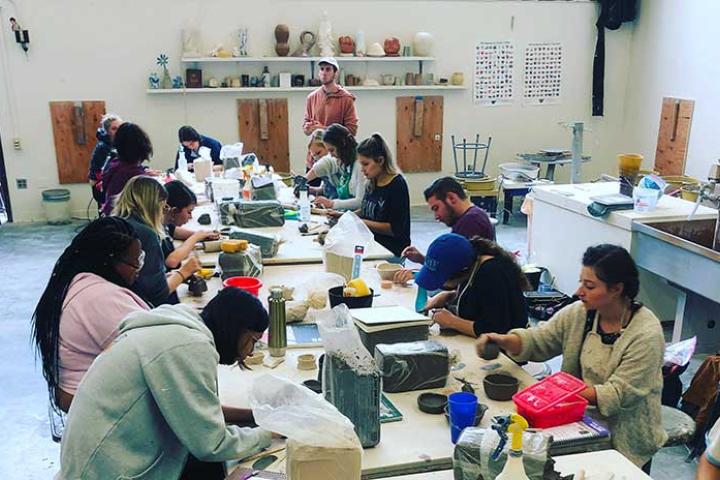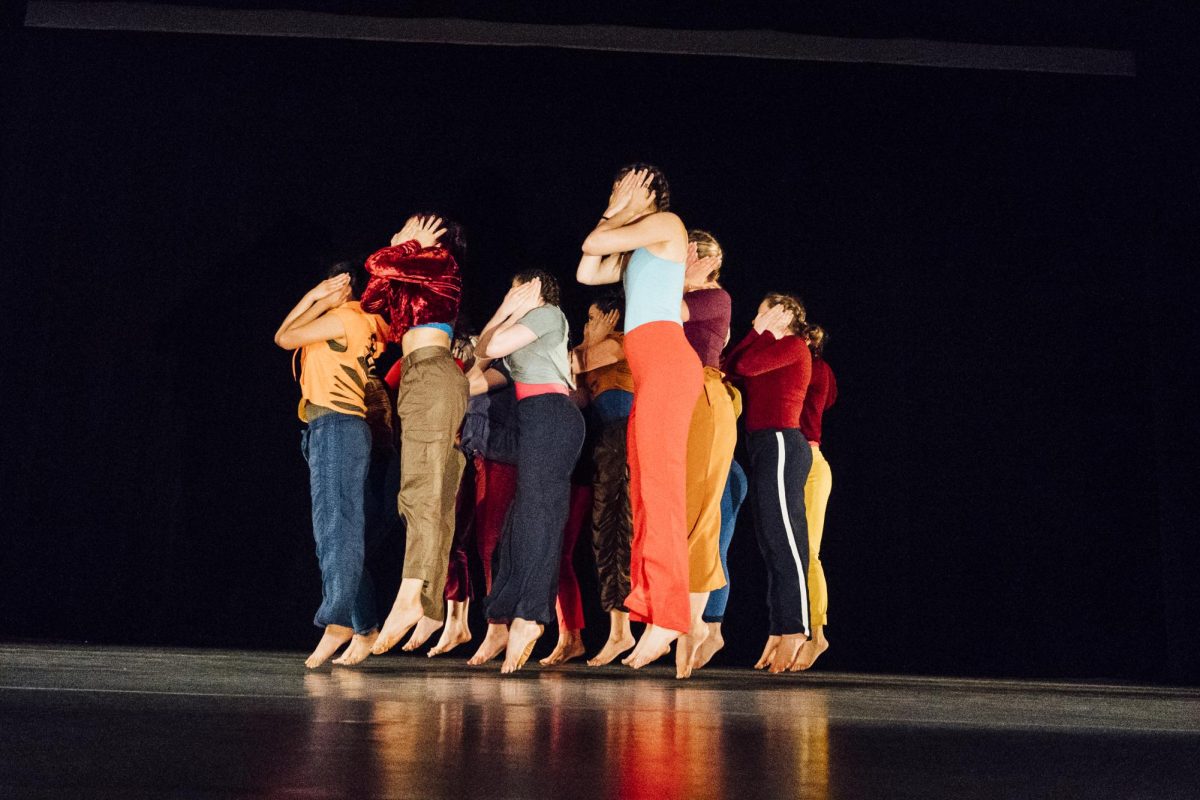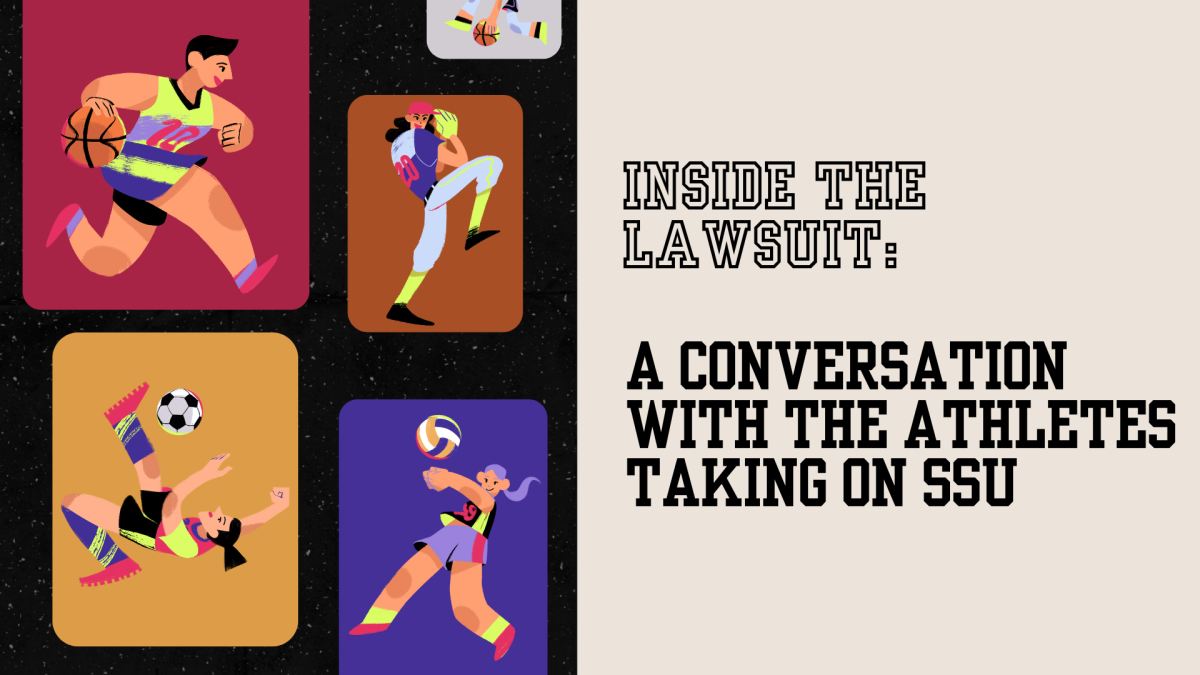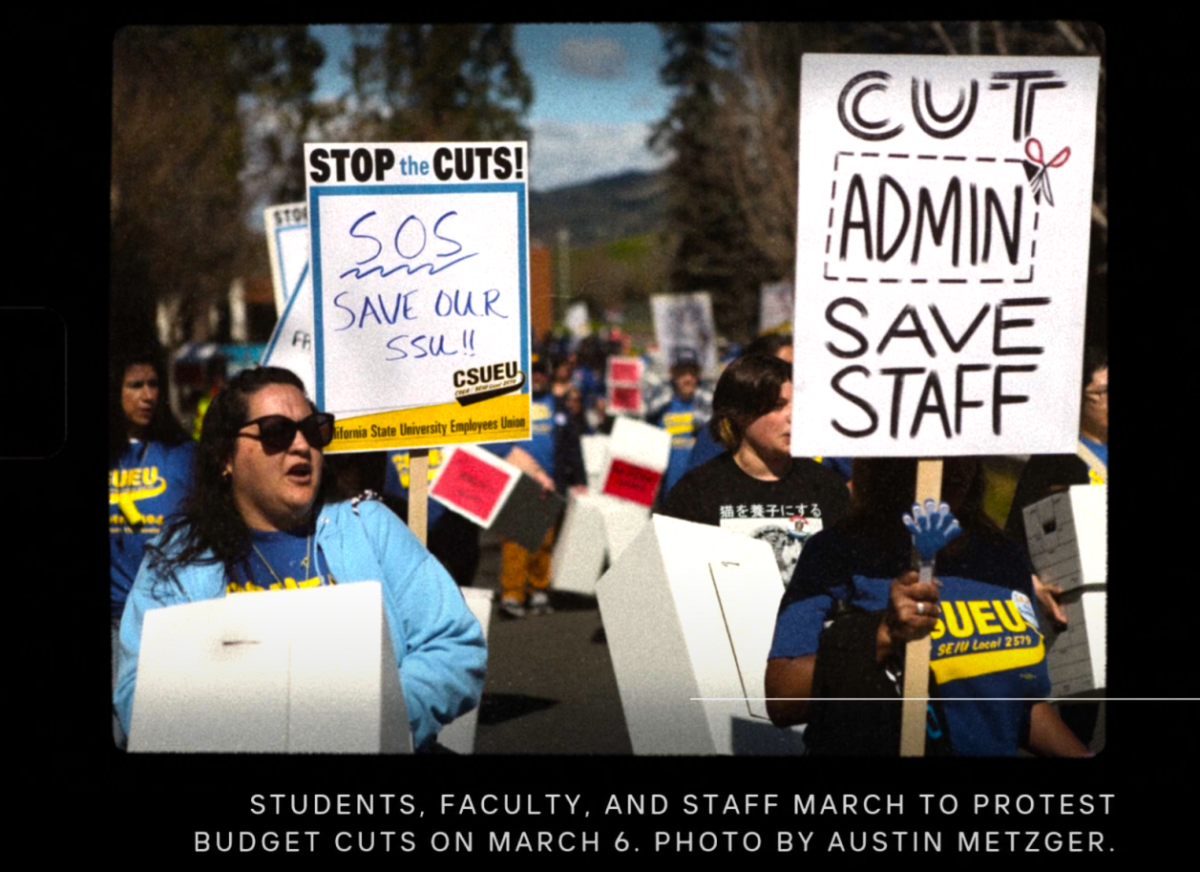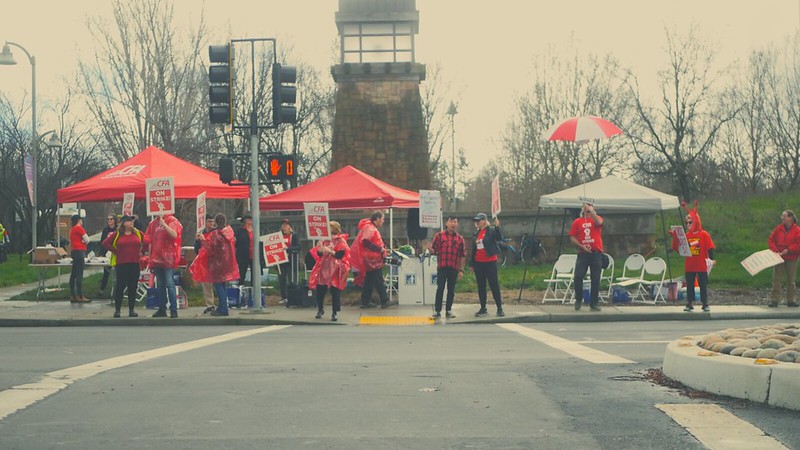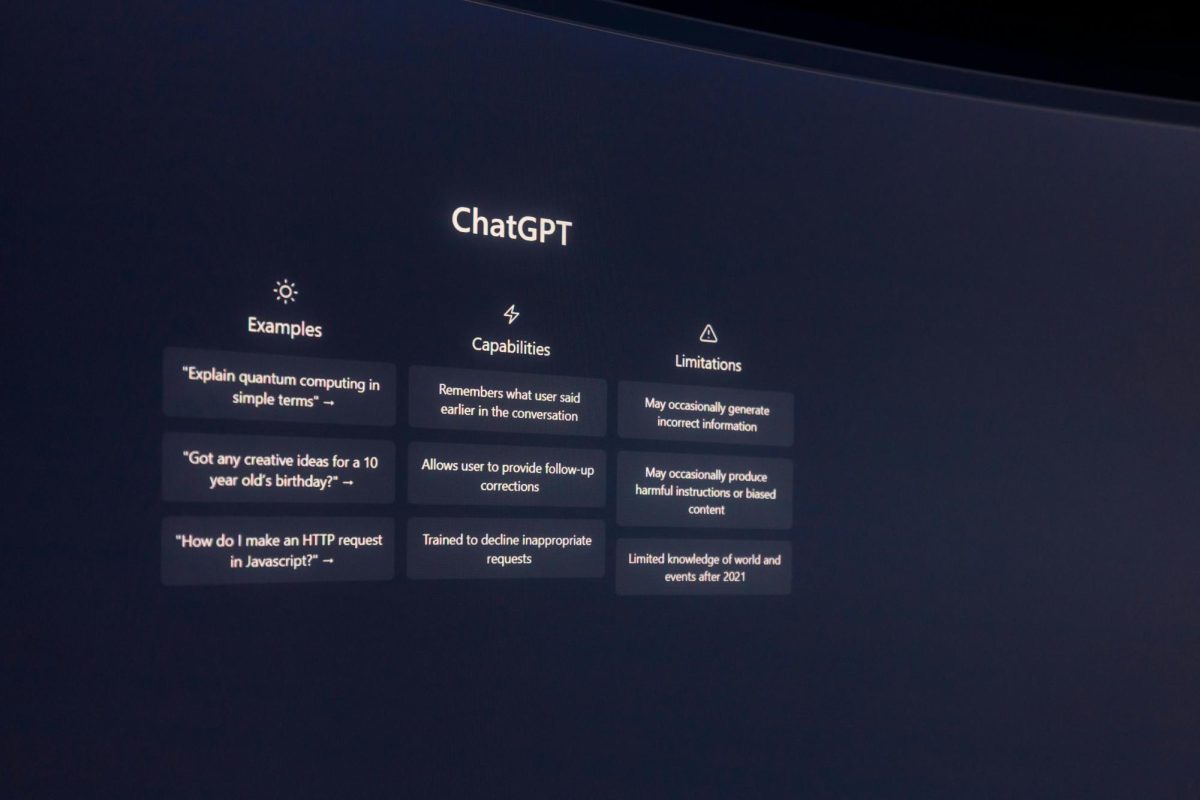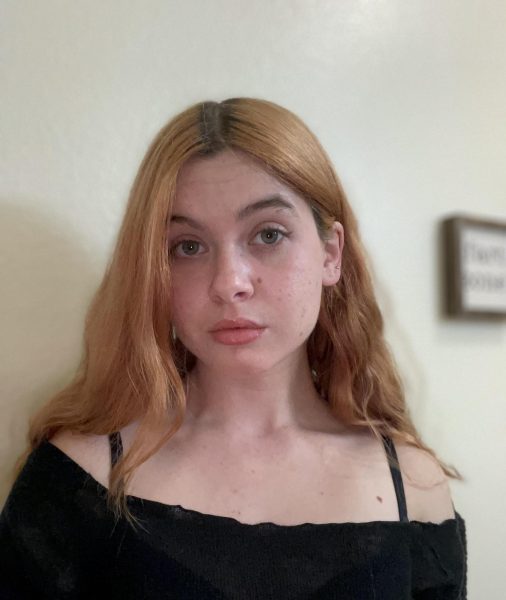Artificial intelligence taking over has been a long-standing trope of Sci-fi, but never has it seemed more real. In our current technologically advanced world full of automated assistants and self-driving cars, should we really be surprised that AI has worked its way into all aspects of our lives?
On Feb. 4, California State University Chancellor Mildred Garcia announced that Sonoma State will be the nation’s first AI-powered public university system in the nation. In a campus-wide email, Garcia explains that this initiative will provide students, faculty, and staff access to “…learning, research, and professional teaching tools—including ChatGPT…” at no cost.
However, not everyone is ecstatic about this cutting-edge resource. This announcement comes on the heels of devastating university-wide budget cuts. Six departments were closed and 46 professors’ contracts were terminated for the next semester, leaving people to question how much value Sonoma State places on human-to-human education.
Sonoma State, along with the other 22 CSUs, maintains that this will prepare students and faculty for our future AI-driven economy. Sonoma State isn’t alone in shifting gears to better prepare for how AI will affect the job market.
We are seeing AI integrated into all industries and sectors of the economy, and this leads us to wonder: What does the future of AI look like? Should people prepare for job displacement due to AI workers? How can we better prepare ourselves for the future? Based on how things are going, we as a society need to start adapting to AI now before it’s too late and we are rendered obsolete.
Many feel fear and skepticism towards AI and its coming effects on the workforce. As we’re hearing stories like CEO of e-commerce company Dukaan, Sumit Shah, boasting of firing over 90% of support staff due to the streamlined effectiveness of AI, many fear for their jobs down the line. While job displacement due to AI is a valid concern for people, it’s still not too late for us to learn how to use AI and be valuable assets in the coming job market.
One industry that has already begun integrating AI into their assembly line bringing mixed public reaction, is journalism. News site, Quartz, recently faced backlash for publishing AI produced content that aggregated reporting from CNN and TechCrunch journalists.
Another creative field where we’re seeing AI is in the writers’ room in Hollywood. During the screenwriter’s strike in September. 2023, generative AI in the workplace was a major point of contention. The screenwriter’s demands were met and they were able to strike a deal that ensured protections against AI-generated material. The labor battle ended after negotiations were reached that ensured that AI will only be used as a resource for humans and not in lieu of them.
AI has been evolving at such a rapid rate, it’s hard to know exactly what jobs it will logically eliminate down the road. For instance, now in our digital house-shopping market, do we really need the middle man of a real estate agent taking a 6% charge when the buyer now does the majority of the legwork?
To gain better insight into the evolution and trajectory of artificial intelligence, I talked to someone with his finger on the pulse of new and emerging technology, Dayvid Iannaci.
Iannaci is the founder of acclaimed marketing and advertising futurist company The Ghost Agency Inc. The Ghost Agency Inc. is not your standard design company. They’ve helped established companies, like Lowe’s, Google, In-N-Out, etc., visualize what the future of technology could look like for their brand while helping them execute and integrate their vision(s). They help companies generate hypothetical technology or to help design futuristic innovative spaces, like the award winning Google Cloud Headquarters Space in Sunnyvale. Due to the cutting-edge nature of their work, Iannaci is an expert on the matter of AI.
Iannaci reflects on the timeline of chess computers to help us gauge the evolution of AI. “When chess computers first started out, they were awful and beginners could beat them. It took 20 years for supercomputers to learn to beat humans, 10 years from here it’s ridiculous for you to even try to beat them. A span of 30 years is a good benchmark to look at for AI and decision making. As a matter of fact, computers helped to make it more exploratory. Basically, it’s a tool like any other.”
To truly emphasize the rapid growth of AI, Iannaci reflects on multiple seminars he held last year. “I gave three talks last year, each roughly a month apart. Each one of those were long seminars on the state of AI. The examples I was giving were outdated by the time I gave each talk. That’s remarkable. It’s moving at a speed that you cannot possibly keep up.”
Given the shocking turnaround speed of new technology, we may be transitioning into an AI driven market sooner than we planned. Iannaci described this transition as, “more of a shift, not just jobs going away.”
This isn’t the first, or last instance of a new technology rattling people. Iannaci points to numerous case studies of resistance to adopting new technological processes in history, even when it makes people’s jobs easier. “Photography is a great example of this, the switch from film to digital. With film, you used to have to write down all the data between photos. [Digital photography] changed the way we were able to do anything.”
Iannaci reflected on his own personal experience adapting to new technology in his field“I’m in graphic design. When computers first came onto the scene, typesetters were saying, ‘Screw that! It’s not real, it’s cheating.’ Typesetters who didn’t adapt to computers lost their jobs.”
This resistance to accepting new technology and fear surrounding it is a pattern that we as a society tend to follow. We can learn from the past so we as individuals can better prepare ourselves for our modern world and not be a slave to the old ways.
“In Hollywood, when the paint roller was first invented in the 1930s, the Painter’s Union revolted because paint rollers were putting people out of work. They saw it as cheating and diminishing the skills it took decades to perfect.” Iannaci said, “The horse was put out of work by car.”
Of course, thinking of AI applications in the realm of the art world may sit a little differently for some people, especially artists. Creating art is an inherently human experience that involves emotion, leaving some to wonder—how can AI hope to emulate the humanity that goes into creating art? And as AI evolves, will it render human creativity irrelevant and obsolete?
How do artists feel about the emergence of AI in creative fields? Third-year Art Studio major Joanna Wheeldin says, “I think it’s more likely that AI will eliminate jobs that don’t require creativity so that creative people are able to focus on producing artwork that other humans will inherently value because another person made it.”
Wheeldin goes on to recall a quote by professional artist Joanna Maciejewska saying, “‘We want AI to do our laundry and dishes so we can focus on creating art. Not for AI to do our art so we can focus on doing laundry and dishes!’” Wheeldin continues, “I think that rings true. I think that if AI were to have some real impact creatively, the best thing would be for it to make efficient the kinds of jobs that people are dissatisfied with long-term, and open opportunities for more art to be created.”
This debate over AI’s applications is being argued more than ever now as we are starting to see how AI is incorporated into education. AI being rolled out in classrooms comes as a shock to some of us who’ve grown up being scolded and lectured for using the internet or Wikipedia for schoolwork.
“[There has been] all kinds of backlash from teachers about using AI.” Iannaci, a father of a middle and high schooler, is still trying to acclimate to AI’s use in education. “I’m [of] a couple different minds about this. They need to learn how to use it and [how to] ask questions, it’s what’s going to make them viable. Should they be taught to ignore it? I don’t know!”
Artificial intelligence, like all new technology, can be scary. From figuring out AI copyrights to the moral implications of AI, there’s still lots of grey area. As we figure out how to navigate this AI world and how it will change, it’s important to not resist.
“When I talk to people who are afraid, [I tell them] ‘AI isn’t going to replace people and steal their jobs.’” Iannaci continues, “‘However, people who embrace AI will be far more valuable than those who don’t.’ AI will not replace people, but people who use AI will.”
The good news is, according to Iannaci, that we don’t need to be immediately fearful of our artificial intelligent overlords. “For humans, the danger is if some human winds up with a leg up. That group of people will, historically speaking, enslave and subjugate people. The good news is it’s everywhere all at once so nobody can truly dominate the others!”

